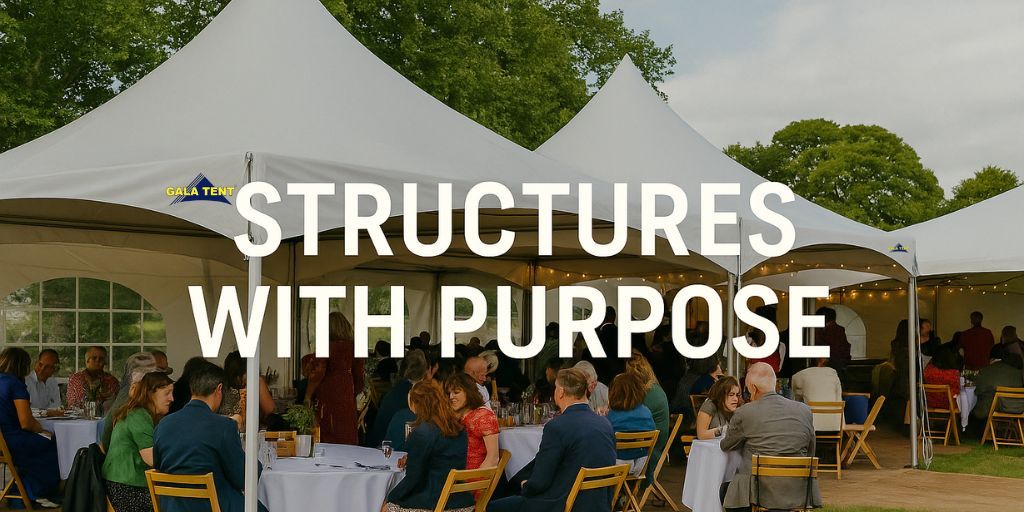How Gala Tent Is Framing the Future of Sustainable Events in the UK
Structures with purpose: where performance meets planet

How Gala Tent Is Framing the Future of Sustainable Events in the UK
In the shifting landscape of UK live events, one thing is becoming nonnegotiable: sustainability. Festival-goers, corporate clients, local councils, artists and audiences alike are increasingly judging an event not just by its line-up or décor, but by its environmental footprint. For Gala Tent, a specialist in outdoor event infrastructure, this pivot presents both a responsibility and a strategic opening.
The Sustainability Imperative in UK Live Events
Live gatherings were once judged solely on spectacle. Now they are also judged on waste, carbon emissions, resource use and legacy. According to a recent State of Play: Festivals 2025 report, 77% of attendees now expect events to cut waste, and two-thirds say sustainability influences whether they attend at all.
This isn’t just a festival concern. Corporate events, weddings, local authority functions and brand activations are under growing pressure to prove lower environmental impact. Event planners report that sustainable materials, carbon tracking, hybrid formats and circular design are among the top trends for 2025.
For marquee and tent providers, that means structural solutions must evolve from heavy use of plastics and disposables toward recyclable, modular, reusable systems that reduce waste from the ground up.
What Organisers Expect: From Waste Cut to Carbon Clarity
Event clients now expect more than green buzzwords. They are asking:
-
Material transparency: Are those membranes, fixings and flooring systems recyclable, reused, or repurposed?
-
Modular & scalable design: Can structures be adapted to different footprints rather than demolished and rebuilt?
-
Logistics emissions: How far must materials travel, and can transport be optimised or offset?
-
End-of-life planning: What happens to components after the event – reuse, resale, or recycling?
-
Carbon accounting & offsetting: Can we measure and neutralise the event’s footprint, including the infrastructure side?
Meeting these expectations is now a differentiator among event service providers.
Gala Tent’s Green Edge: Materials, Design & Circular Thinking
Gala Tent is already well placed to lean into sustainability as a differentiating asset. Here’s how its approach can be (and in some cases already is) aligned with this event revolution:
-
Durable, reusable structural systems: Rather than disposables, Gala Tent’s clearspan and frame systems are engineered for many cycles of use, minimising the need for one-time plastics.
-
Eco-certified fabrics & membranes: Sourcing PVC and textile membranes that are recyclable or lower VOC, plus integrating materials that use recycled content or are designed for a circular economy.
-
Modularity & scalability: Flexible configurations allow the same structure to be downsized, extended, or reused across multiple sites — reducing the need for bespoke one-offs.
-
Reduced logistics footprint: Using local staging depots, efficient transport routes and consolidated load planning to minimise haulage emissions.
-
Lifecycle planning: Partnering with recyclers, refurbishers, or remanufacturers to ensure parts and fabric components continue to live beyond a single event.
-
Carbon transparency: Offering clients pre- and post-event carbon estimates tied to the tent infrastructure and optionally integrating carbon offset programmes.
By embedding sustainability in its core product offering, Gala Tent positions itself not just as a supplier but as a partner in the event’s eco narrative.
Case Studies: Real UK Events with a Sustainable Backbone
While not every event is fully green (yet), there are illuminating examples of where purpose-driven infrastructure is making a difference.
Take, for example, a midsize open-air corporate gala in the Cotswolds, where Gala Tent provided a clearspan structure that was repurposed from a past project, avoiding new fabric spend. Logistics were coordinated from a regional depot, cutting travel miles by 40%. Waste sorting stations and recyclable signage were installed, and Gala Tent delivered a carbon accounting addendum for its supply chain contribution.
In another instance, a UK music promoter switched to reusable clear membranes and local crew deployment for a summer concert. Gala Tent’s modular roof and truss design allowed the same shell to shrink or expand across twin shows, reducing re-fabrication waste and saving cost.
These examples show that sustainability and profitability can go hand in hand, and that audience perception increasingly rewards the greener approach.
Challenges, Opportunities & Next Steps
Transitioning to fully sustainable infrastructure isn’t without challenges:
-
Cost pressures: Eco materials and circular infrastructure often carry higher short-term costs, which some clients may balk at.
-
Supply chain constraints: Sourcing recycled or environmentally certified components at scale is still emerging in the industry.
-
Client education: Many event buyers still focus solely on décor or lineups; they may not perceive the tent infrastructure as a sustainability lever.
-
Measurement complexity: Carbon accounting across every stage (fabrication, transport, erection, use, and end-of-life) is nontrivial.
Yet the opportunity is compelling. As more clients demand proof, Gala Tent can take the lead by:
-
Publishing a Sustainability Report or “Green Infrastructure Manifesto”
-
Developing carbon impact tools for clients
-
Partnering with event sustainability consultants or certification bodies
-
Highlighting success stories with media, case studies, and awards
-
Using the green position as a differentiator in bids and tenders
By doing so, Gala Tent can become synonymous with the new benchmark in UK event infrastructure.
In sum: sustainability is no longer a fringe concern; it’s a central battleground in the events industry. Gala Tent’s expertise in outdoor structures gives it a rare chance to lead the shift. By aligning its product design, sourcing, logistics and messaging with the growing demand for low-waste, carbon-aware events, Gala Tent can turn the sustainability trend into both a market advantage and a public statement about purpose.







 Alexandrea
Alexandrea